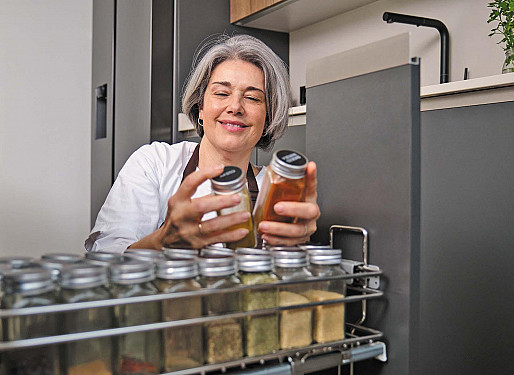Salad greens: Getting the most bang for the bite
Tailor salad greens to your dietary needs and taste preferences.

Image: © yulkapopkova/Getty Images
In the quest to follow daily dietary recommendations and eat the right amount of vegetables, salad is your friend. A large salad can check off your veggie requirements for the day in one fell swoop.
But not all salad greens are created equal. "They vary in regard to their nutrient content, nutrient density, flavor, and texture," says Elisabeth Moore, a registered dietitian at Harvard-affiliated Beth Israel Deaconess Medical Center. So it helps to know which salad greens will give you the most bang for the bite.
Common greens
The raw leaves we toss into a salad may come from several varieties of lettuce. These include
-
crisphead (also known as iceberg): a round, tightly packed head of light-colored, crunchy leaves
-
romaine: long, crisp leaves often used in Caesar salads
-
butterhead: a loosely packed head of lettuce that resembles a blossoming flower (such as Boston lettuce)
-
loose leaf: large, curly, sometimes reddish leaves arranged along a central stalk (such as red or green leaf lettuce).
It's also common to use the leaves of many other plants in salads, such as spinach, kale, arugula, dandelion, escarole, and watercress.
The benefits of greens
Most salad greens contain essential dietary nutrients, such as vitamins, minerals, and even water. "They also provide fiber, which is beneficial in many areas, including cardiovascular and gastrointestinal health. Greens are also low in calories, but high in nutrients and volume, which can be helpful if you're trying to manage your weight," Moore points out.
Some of the most nutritious greens include spinach, kale, romaine, watercress, and arugula (see "Salad greens by the numbers"). They are rich in a combination of vitamins A, C, and K; several B vitamins (including folate); and potassium.
But some greens aren't nutrient powerhouses. Iceberg lettuce, for example, contains folate and vitamin A, but is otherwise known for being the least nutrient-dense salad green. "I'm not recommending that you avoid iceberg lettuce," Moore says, "just that it's best to mix it with other greens."
Salad greens by the numbers |
||||||
|
Nutrient levels shown are for one cup of raw greens. Remember: it takes two cups of greens to make the nutritional equivalent of one cup of vegetables. |
||||||
|
Arugula |
Kale |
Romaine |
Spinach |
Swiss chard |
Watercress |
|
|
Vitamin A (IU) |
237 |
1,598 |
4,094 |
2,813 |
2,202 |
1,085 |
|
Folate (mcg) |
10 |
23 |
64 |
58 |
5 |
3 |
|
Vitamin C (mg) |
1.5 |
19 |
2 |
8 |
11 |
14 |
|
Vitamin K (mcg) |
11 |
113 |
48 |
144 |
299 |
85 |
|
Calcium (mg) |
16 |
24 |
16 |
30 |
18 |
41 |
|
Magnesium (mg) |
5 |
8 |
7 |
24 |
29 |
7 |
|
Potassium (mg) |
37 |
79 |
116 |
167 |
136 |
112 |
|
Fiber (g) |
0.2 |
0.6 |
1 |
0.7 |
0.6 |
0.2 |
|
Note: g = grams; IU = International Units; mcg = micrograms; mg = milligrams. Source: USDA National Nutrient Database for Standard Reference. |
||||||
Building your salad
Build a salad based on the nutrients you need most or simply the tastes and textures you like best. For example, arugula and watercress are peppery, dandelion and escarole are bitter, mâche and iceberg are sweet, and a green called tatsoi has a mustard flavor.
The USDA recommends two cups of vegetables per day for women ages 51 or older, and two-and-one-half cups per day for men ages 51 or older. But a cup of vegetables is not the same as a cup of salad greens. It actually takes about two cups of greens to make the nutritional equivalent of a one-cup serving of vegetables.
If that sounds like a lot of greens for one sitting, just add other vegetables to your salad bowl, such as tomatoes, carrots, and peppers. If you're eating salad as a meal, add a source of lean protein, such as chicken, fish, or egg.
And a word of caution: no matter how healthy your salad greens and other vegetables are, salad dressings can easily add fat, sugar, and calories. Moore's advice: "Choose oil-based dressings or simple oil and vinegar. Measure the portion and aim for no more than 2 tablespoons."
Disclaimer:
As a service to our readers, Harvard Health Publishing provides access to our library of archived content. Please note the date of last review or update on all articles.
No content on this site, regardless of date, should ever be used as a substitute for direct medical advice from your doctor or other qualified clinician.















